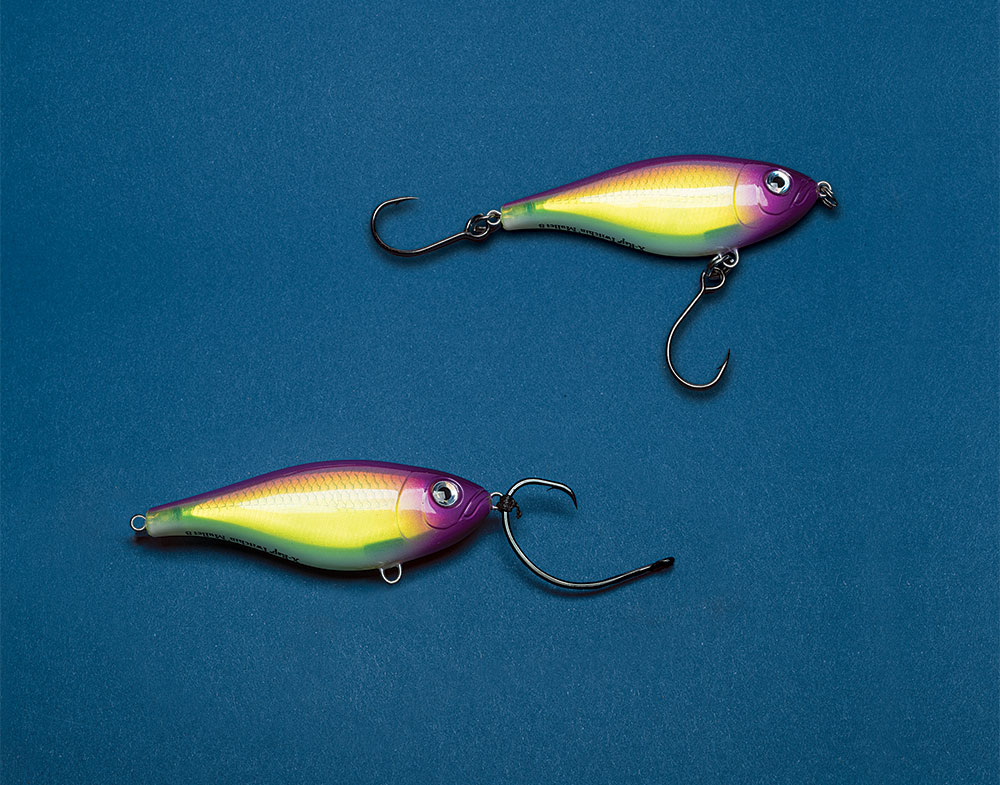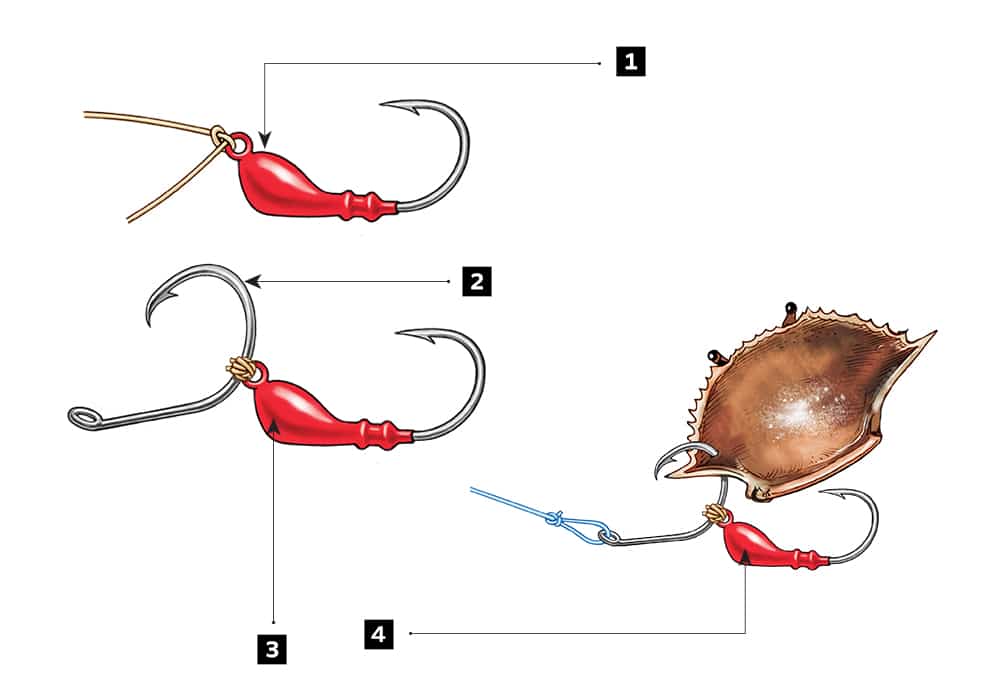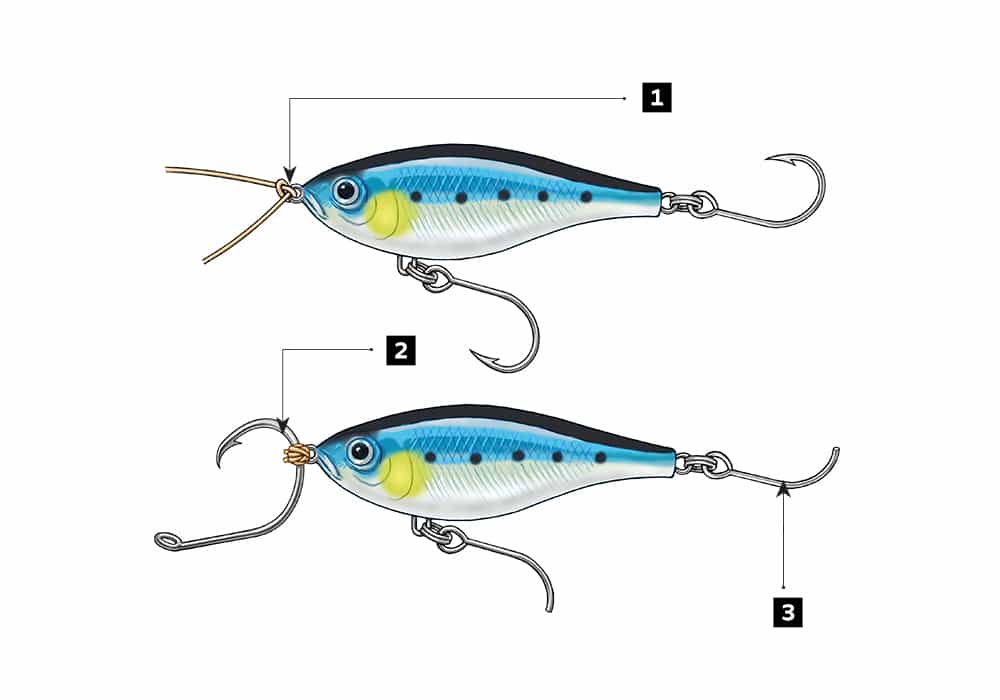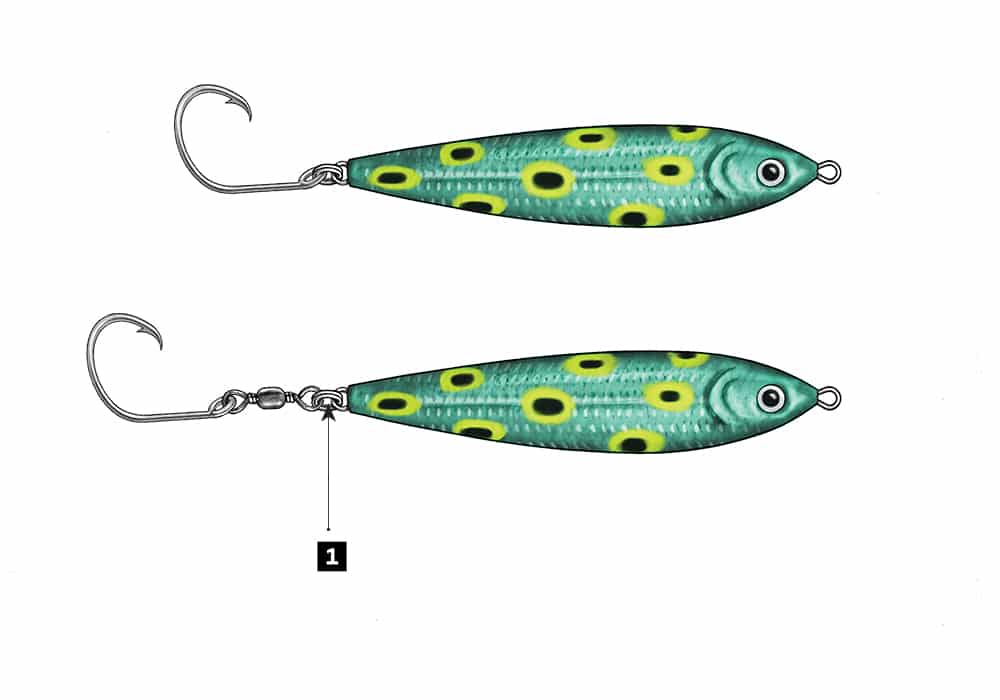
It seemingly goes against the grain. Can a circle hook affixed to a casting, topwater or subsurface lure bolster successful hookups? When fishing with traditional casting lures, we rear back during the strike to set treble- or J-style hooks.
Therefore, it’s only logical that a casting lure rigged with a circle hook should come flying back to us under the same treatment. But, as you’re about to discover, that’s not necessarily so.
Capt. Bouncer Smith has been catching Miami Beach tarpon for more than 50 years. A strong conservation advocate, Smith has refined his methods and rigs to inflict minimal harm to tarpon and other game fish. And his latest innovation is a head-turner.
Given the vast population of tarpon wintering in Miami, Smith promotes lure fishing when conditions permit. To make it less harmful to the fish and less dangerous to the person removing the lure, he experimented with circle hooks paired to surface plugs and also jigs. With the former, nearly all the fish were jaw- or lip-hooked, and his clients’ catch ratios soared.
“The hookup ratios of plugs went from between 10 and 30 percent with stock hooks to 80 percent with a circle hook,” Smith says, “and a tarpon, — or any other fish for that matter — can’t shake a well-planted circle hook.”

[2] Match circle hook to lure
[3] Make six half hitches above the lure eye and six below
[4] Hook bait as usual (jig adds weight) Steve Sanford
Kudos to Mola
An earlier pioneer of replacing stock hooks with circle hooks on lures is Rick Mola of Fisherman’s World in Norwalk, Connecticut. Nearly two decades ago, seeking to minimize the throat- and gut-hooking of striped bass and bluefish on diamond jigs, Mola replaced the stock treble hook with a single circle hook. He experienced a nearly perfect hookup-to-catch ratio on his first outing because the bass and blues couldn’t shake the circle hooks, which, ironically, had set in their jaws and lips. I witnessed this firsthand while shooting a television episode with Mola soon after, and we covered it in Salt Water Sportsman. Since the Mola experiment, numerous coastal anglers jumped on this bandwagon and continue to enhance their hookup ratios with striped bass, bluefish, mackerel and tuna by using diamond- and flutter-style irons rigged with circle hooks.
Variation of the Circle Jig
Back down Miami way, Smith often drifts live shrimp and crabs on circle hooks for tarpon, permit and snook in inlets and passes. If some weight is desired to bring a bait deeper, he piggybacks a jig to the circle hook. “I have a circle hook sized to the bait,” says Smith. “Now, if I want a bait to go deeper, I’ll take a jig the likes of a Hank Brown Hookup and secure it tightly to the outside bend of the circle hook with half hitches of 50 or 70 waxed thread. The directions for securing (outlined above) are the same as with a plug; only difference here is that you’re first securing the thread to the eye of the jig, then using half hitches to fasten it to the circle hook. The companion jig serves no purpose other than to add ballast. You can leave its hook intact or cut it off.”
The circle-hook/jig combo for tarpon has roots going way back to Louisiana, with the fabled Coon Pop. Once a tarpon was hooked, the heavy jig was rigged to break away and not interfere with the fight. Its negatives: another heavy jig gone and more lead on the ocean floor. Smith’s method is a bit cleaner because his jig usually remains attached to the hook.

[2] Match circle-hook size to target species
[3] Remove original hooks, or leave ’em for balance and clip off points Steve Sanford
Back to the Top
For topwater tarpon, Smith has refined two lures: Rapala’s Skitter Walk and the new Coastal Series Twitchin’ Mullet 8, a slow-sinking, subsurface bait; though he says just about any plug works with proper tweaking.
The initial step is to match the size of an in-line circle hook to the target fish. In Smith’s case, it’s a 7/0 VMC light-wire circle. Next, he advises cutting off around 16 inches of either 50 or 70 waxed thread, centering that strand through the lure-eye ring and tying an overhand knot to secure; about 8 inches of thread should be exposed on both sides. Take one strand and tie six half hitches around the bend of the circle hook toward its hook eye. With the remaining strand, tie six half hitches around the bend of the hook toward its point and trim the excess. That secures the circle hook to the lure-eye ring.

Fine-Tuning and Ballast
Some fine-tuning may be required to maintain natural lure action. For example, Smith says every lure design has its own issues, and some perform best by leaving their stock hooks in place. “The stock hooks sometime balance out a lure after a circle hook is added to the nose,” says Smith. “To keep such a lure from nosediving and upsetting its action, just leave the stock hooks alone. They shouldn’t interfere with anything. If you’re concerned over them, just clip off the hook points and leave the shanks for ballast.”
Hook-Sets
Though there’s a marked difference between casting lures and jigs, the one constant is the proper hook-set. It’s a discipline which must be mastered with circle-hook modifications. On the strike, whether with the iron or topwater, do not rear back; the circle hook will not likely set. Rather, hold the rod in place during the strike, and wind rapidly until you gain line and the fish moves off. At this point, the circle hook should be set, and a normal fighting style can be resumed.
Smith says the circle-hook addition works well on topwaters, swimming plugs, spoons and bucktails, and it’s a proven and popular modification for diamond- and flutter-style jigs, and even traditional deep jigs.
Want to increase hookup ratios while posing less harm to fish? Try the circle-hook modification. It’s a win-win for both anglers and conservation.









